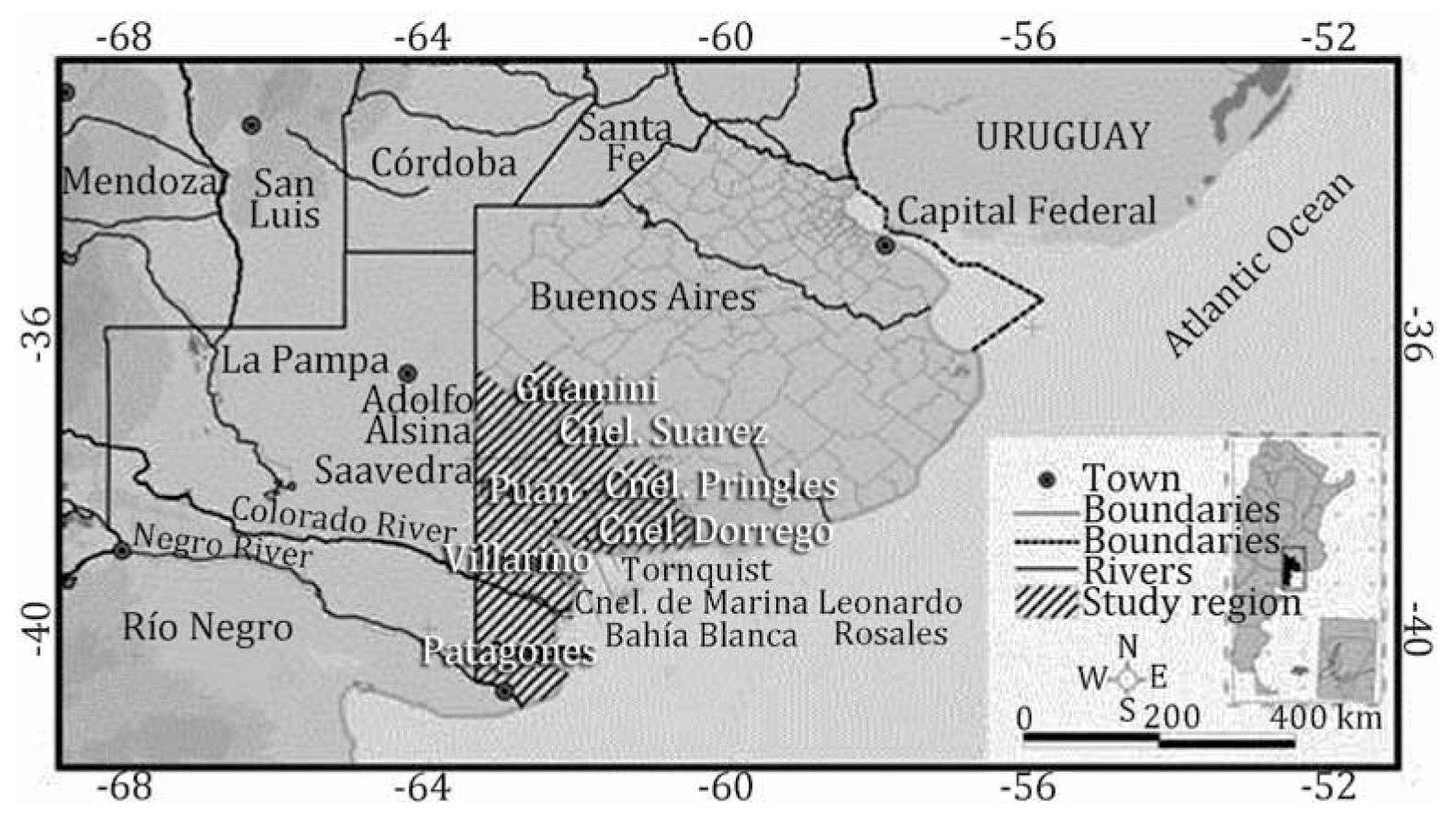Dust storms, drought and desertification in the Southwest of Buenos Aires Province, Argentina
Keywords:
drought, land mismanagement, soil erosion, desertification, dust storms, area recovery, sustainable management, ArgentinaAbstract
The study region is one of the most endangered area from wind erosion in the country. This process, coupled with recurrent droughts in last decades and the mishandling of productive practices have generated desertification. This study presents a review of the interaction of these processes based on literature, field survey and perception of producers. Recommendations for rehabilitation are proposed. The area covers 6.5 million hectares, hosting in 2002: 550,000 people and 7,825 farms in irrigated and non-irrigated lands. Irrigated lands are devoted to agricultural production. Non-irrigated have a mixed production system (beef cattle-wheat). Mean annual rainfall in 1940-2014 was 407 mm. In 60% of these years, rainfall was below the mean. Desertification in the area is a consequence of drought and mismanagement. In wet cycles, producers increase stocking rate and wheat-sown area using the same practices of the humid pampa. As a consequence of dry cycles, land is abandonment and fields covered by sand and invasive plants. Over 20 cm of soil has blown away and sand accumulates in fences and stays suspended in the atmosphere, reaching Bahía Blanca city and up to 400 km into the Atlantic Ocean. The area requires deep structural changes in production systems and their management. Emphasis should be on sustainable management, which involves a mentality change of producers and decision makers. Recommendations were made for cleared and non-cleared lands.
Downloads

Downloads
Published
How to Cite
Issue
Section
License
Aquellos autores/as que tengan publicaciones con esta revista, aceptan las Políticas Editoriales.










.jpg)




